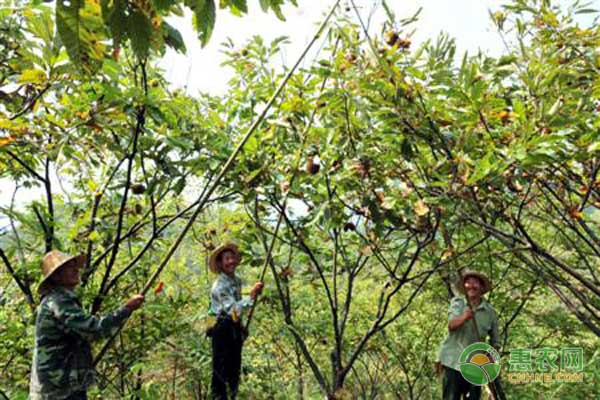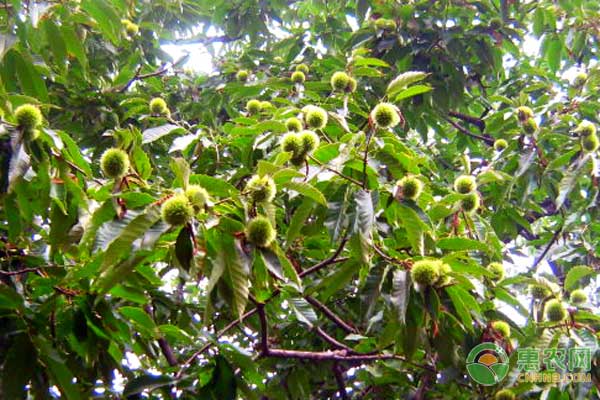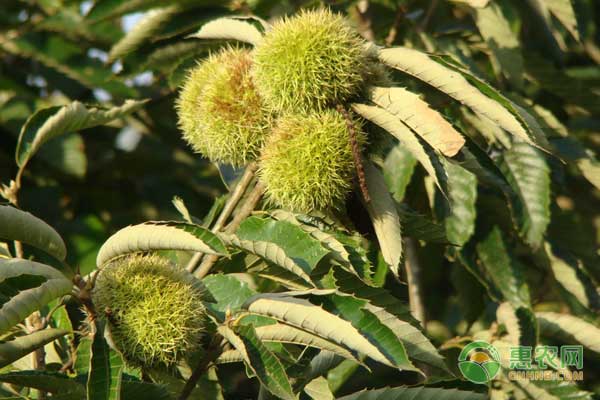What are the pests and diseases of chestnut planting? Main diseases and insect pests of chestnut and their control techniques
In China's chestnut-growing areas, the most common major pests and diseases are chestnut weevil, pruned weevil, chestnut bee, chestnut plaster, chestnut blight and chestnut rot. The following small series will introduce the symptoms of these diseases. And prevention methods. First, the main pests and their prevention 1. Chestnut weevil The chestnut-like weevil is widely distributed in the chestnut planting area. Adults endanger the young chestnuts and tender shoots; the larvae endanger the chestnuts, and the litter is filled with fine sawdust-like worms, often eating the chestnuts in a short period of time and Inducing fungal parasitic, causing the chestnut to mold and rot, which makes it difficult to store and sell after harvesting. Control method: (1) Strengthen the management of chestnut garden, improve the environmental conditions of chestnut garden, remove parasitic plants other than chestnut, and kill the wintering larvae by combining 10-15 cm deep in winter. (2) Timely and thorough harvesting of mature chestnuts to reduce larvae in the woodland to remove fruit into the soil, basically to achieve the ground on the tree to clean up. At the same time, the shed empty cockroaches are burned to destroy the insect source. (3) Chestnut steamed. The method is to dig a pit on the ground, the size depends on the number of chestnuts. The inner wall of the pit is hammered with a hard object as a steaming pit. Pour the chestnuts collected in the day into the steaming pit. After filling it, pour five holes deep into the pit at a distance of 25 cm from the corner and the center with a pointed stick. Bottom, then use a thin mud on the top of the pit. Use 6 pieces of aluminum phosphide per cubic meter, put the tablets into the 5 holes, quickly cover the treetops or straws, and then cover the 0.18 mm thick plastic film prepared with the surrounding mud. Compaction prevents leakage and covers the film with a layer of straw or treetop shade. It is also possible to stack the chestnuts directly on the concrete floor, then jack, put the medicine, and cover the grass with a colored strip of plastic cloth and compact it with mud. After fumigation for 30 hours, the film is removed and the gas can be released after 24 hours. (4) Lishi fumigation method. Pour the chestnut into the cement pool or in the raft or tile tank. Put 6 pieces of aluminum phosphide per cubic meter below the temperature of 15-20 °C, cover it tightly with 0.18 mm film, and remove the film to remove the gas after 24 hours of fumigation. hour. Precautions for chestnut fumigation: 1The aluminum phosphide should not be in contact with the chestnut. Otherwise, the blackening of the contact part will affect the value of the product. The tablets can be wrapped in paper and put into the hole. 2 The aluminum phosphide should not be concentrated in the pile or it will burn easily. ; 3 can not be carried out in the personnel living room to prevent poisoning; 4 fumigation of the chestnut can be eaten after 7 days or it may cause poisoning. 2, pruning weevil The insects occur one generation a year. In mid-June and late June, adults lay eggs in the young cubs and cause early fall. The eggs hatch in 5-7 days. The larvae develop in the barn for 1 month and enter the soil for winter in August-September. Control method: (1) Pick up the young cockroaches bitten by adult worms in June-July for 3-4 times. (2) Using the pseudo-death of this insect, spread a film on the ground to destroy the adult. (3) 15-20 cm in the deep chestnut garden in winter to kill the wintering larvae. 3, chestnut bee (also known as chestnut bee). The chestnut bee is common in the chestnut planting area, and the damaged branches form irregular elliptical tumors, which make the leaf malformation branches weak, and the twigs die in the same year. Because the new shoots cannot be taken out, there is no fruit in the same year, which also seriously affects the yield of the next year. The insects occur one year in a year, and the larvae overwinter in the buds. The wintering larvae begin to feed for food from April to May of the next year, and gradually form a worm with the growth of the buds. The newly formed worms turn green, then turn red, brown. Dry tumor. Control method: (1) Strengthen pruning management. In the winter, the delicate branches and the branches of the worms are cut off to eliminate the overwintering larvae in the buds, thereby improving the ventilation and light transmission of the canopy; strengthening the tending management to enhance the tree potential and improve the insect resistance. (2) After the formation of the worms, the new worms are removed before the emergence of the adults (about 6 months ago). Second, the main diseases and their prevention 1, chestnut plaster disease The pathogen mainly parasitizes on the branches of chestnut, and the shape of the fruit of the burden is similar to that of a medical plaster, which is closely attached to the branches of the tree, and the light causes the branches to grow poorly, and the heavy one causes the branches to die. Control method: (1) Combine pruning, cut off the plaster of the plaster or scrape the mycelium film of the plaster, and then spray the damaged part with 1:100 times Bordeaux mixture. (2) Apply the 20% lime emulsion to the affected area. 2, chestnut disease prevention and treatment methods (1) Strengthen management to improve disease resistance. Strengthen fertilization, cultivating and weeding to control dry pests and leaf-eating pests to enhance tree potential. At the same time, plant resistant varieties should be planted. (2) scrape the lesions. In the spring, the lesions should be removed in time to reach the xylem. The lesions should be scraped off and cleaned and burned. After the skin spots are scraped, they are disinfected with 0.1% liters of mercury or 401 antibiotics and 70% thiophanate 400 times. (3) Strengthening the quarantine of seedlings, it is strictly forbidden to transport diseased seedlings and scions to the disease-free area. 3, chestnut rot disease After storage, transportation in the chestnuts, the large-scale wholesale mold rot caused a lot of damage. Control method; (1) Pick up the damage and pests before storage; the storage should be kept below 10 °C and kept ventilated and clean. (2) Seal the fumigation with formaldehyde or sulfur before storage to reduce the bacteria. The above is the prevention and treatment of common diseases and insect pests of chestnut. I hope to help you. There are many diseases and insect pests in chestnuts. It is necessary for growers to pay attention and do a good job in prevention and management. Rice Seed,Paddy Seeds,Black Rice Paddy Seeds,Upland Rice Seed XIKE AGRICULTURAL GROUP CO . .LTD. , https://www.laoseed.com

